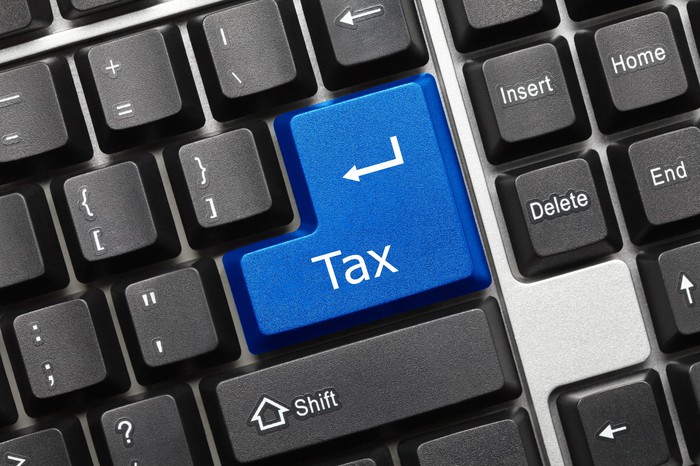
Putting money aside for your future is important, but it’s not easy. Trying to find savings to invest can be hard for anyone. (CPA Flower Mound, Texas: Little Known Investor Tax Breaks)
To encourage people to save, the federal government offers tax breaks that are specifically available only to investors. Taxpayers who put them to full use can cut their tax bills by thousands of dollars or more. And just about any investor can take them if they want. Below, we’ll look at three of the most important tax-saving provisions for investors.
1. Lower tax rates or tax-free treatment for long-term capital gains
Investors have control over one of the largest potential sources of taxable income on their investments: the appreciation in the price of shares over time. Until you sell, you won’t owe taxes on the amount that your investments rise in value. But when you do sell, the tax bill comes due on any capital gains that you’ve earned.
How much you’ll pay in taxes depends on how long you’ve held the investment. For investments you’ve owned for a year or less, the rate on short-term capital gains is the same as your ordinary income tax rate. However, investments owned for longer than a year are eligible for lower long-term capital gains rates that depend on your overall taxable income as follows:
Long-term capital gains tax rates in 2020
| FILING STATUS | 0% RATE APPLIES | 15% RATE APPLIES | 20% RATE APPLIES |
|---|---|---|---|
| Single | Up to $40,000 | $40,000 to $441,450 | Above $441,450 |
| Married filing jointly | Up to $80,000 | $80,000 to $496,600 | Above $496,600 |
| Head of household | Up to $53,600 | $53,600 to $469,050 | Above $469,050 |
| Married filing separately | Up to $40,000 | $40,000 to $248,300 | Above $248,300 |
Data source: IRS. Rate thresholds are based on taxable income.
The savings can be considerable. The 0% rate applies to those who’d ordinarily pay 10% or 12% on other income, while the 15% rate applies largely to those in the 22% to 35% ordinary income tax brackets. The 20% rate corresponds fairly closely with the 37% ordinary income tax bracket.
The favorable rates show that the government wants to encourage long-term investing over short-term trading. If you’ve held an investment for nearly a year, it can be worth it to wait a little longer before selling it in order to pay less in tax on your profits.
2. Favorable tax treatment for qualified dividends
The same advantageous tax rates also apply for dividend income on certain stocks. Not every dividend gets this treatment, but many do.
In order to be treated as a qualified dividend, the company paying it has to be a U.S. corporation or a foreign corporation with its stock listed on a major U.S. stock exchange. In addition, you have to own the stock for a minimum of 61 days during the four-month period surrounding the dividend payment. Certain dividend-paying companies that already get favorable tax treatment, such as real estate investment trusts and business development companies, usually can’t make qualified dividend payments.
The savings are comparable to what you’d get from long-term capital gains, saving anywhere from 7 to 20 percentage points on your tax rate. That adds even more benefit to dividend investing.
3. Tax-free interest on municipal bonds
Finally, many municipal bonds issued by state and local governments qualify for tax-free treatment. Municipal bonds from anywhere in the U.S. are free of tax at the federal level, and they’re usually free of state income tax if you live in the same state that issues the bond.
Tax-free income has greater value for those in high tax brackets, as it can save you as much as 37 percentage points on your tax rate. Interest rates on muni bonds tend to be lower to reflect the tax-free treatment, but you can still end up ahead in many cases.
Be a tax-savvy investor
As tax season approaches, taxpayers across the U.S. will look for ways to reduce their taxes. For investors, the benefits of favorable rates for long-term capital gains, qualified dividends, and municipal bond interest can help you save a lot on your taxes in the years to come.
The $16,728 Social Security bonus most retirees completely overlook
If you’re like most Americans, you’re a few years (or more) behind on your retirement savings. But a handful of little-known “Social Security secrets” could help ensure a boost in your retirement income. For example: one easy trick could pay you as much as $16,728 more… each year! Once you learn how to maximize your Social Security benefits, we think you could retire confidently with the peace of mind we’re all after.
Call Williams & Kunkel CPA today in Flower Mound at 972-446-1040 to have a chat and find out how you can save money on your taxes as a real estate professional.
In addition, you can connect with us to receive updates throughout the business week by following us on Twitter or LinkedIn or liking us on Facebook.
Source: Nasdaq
